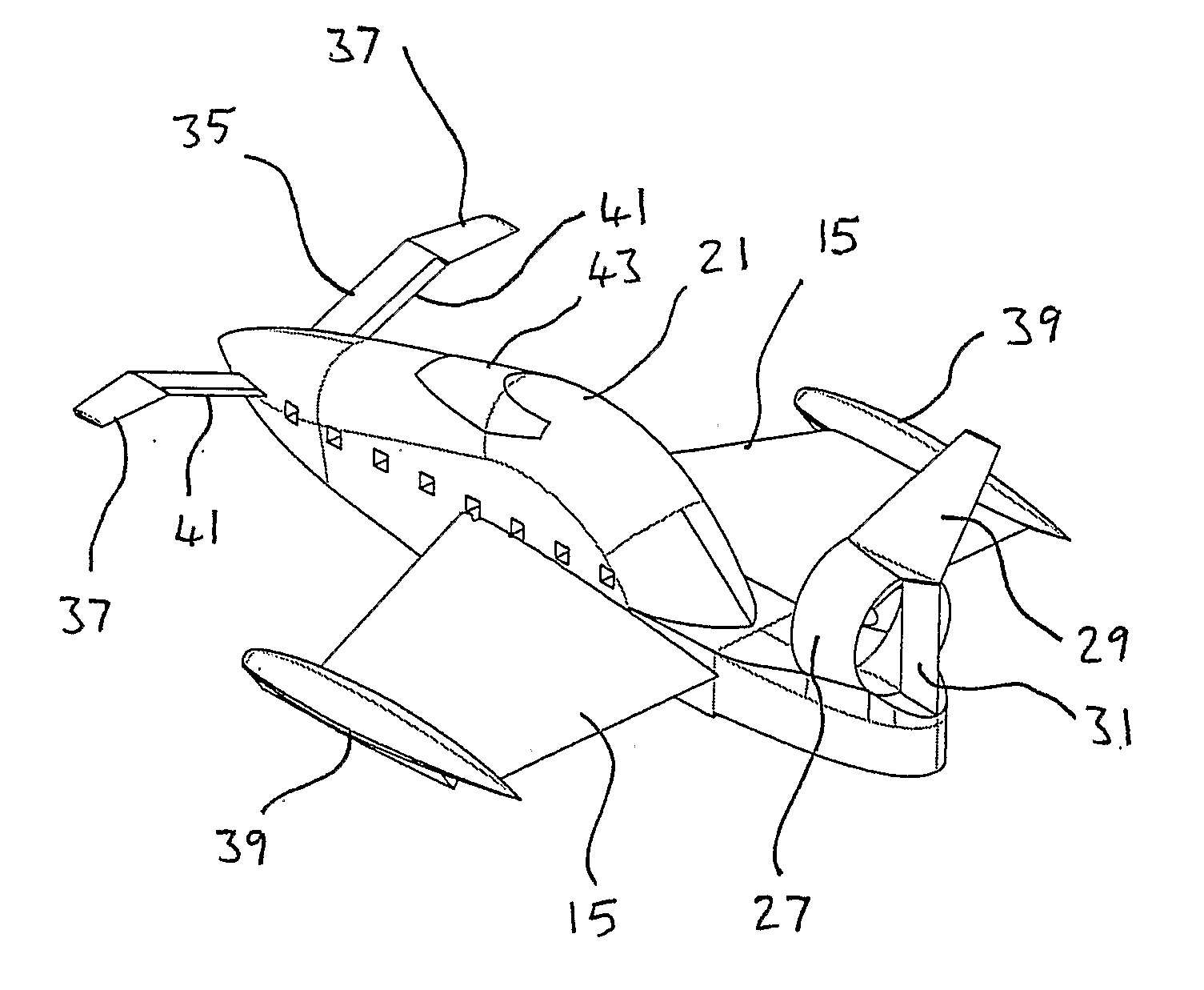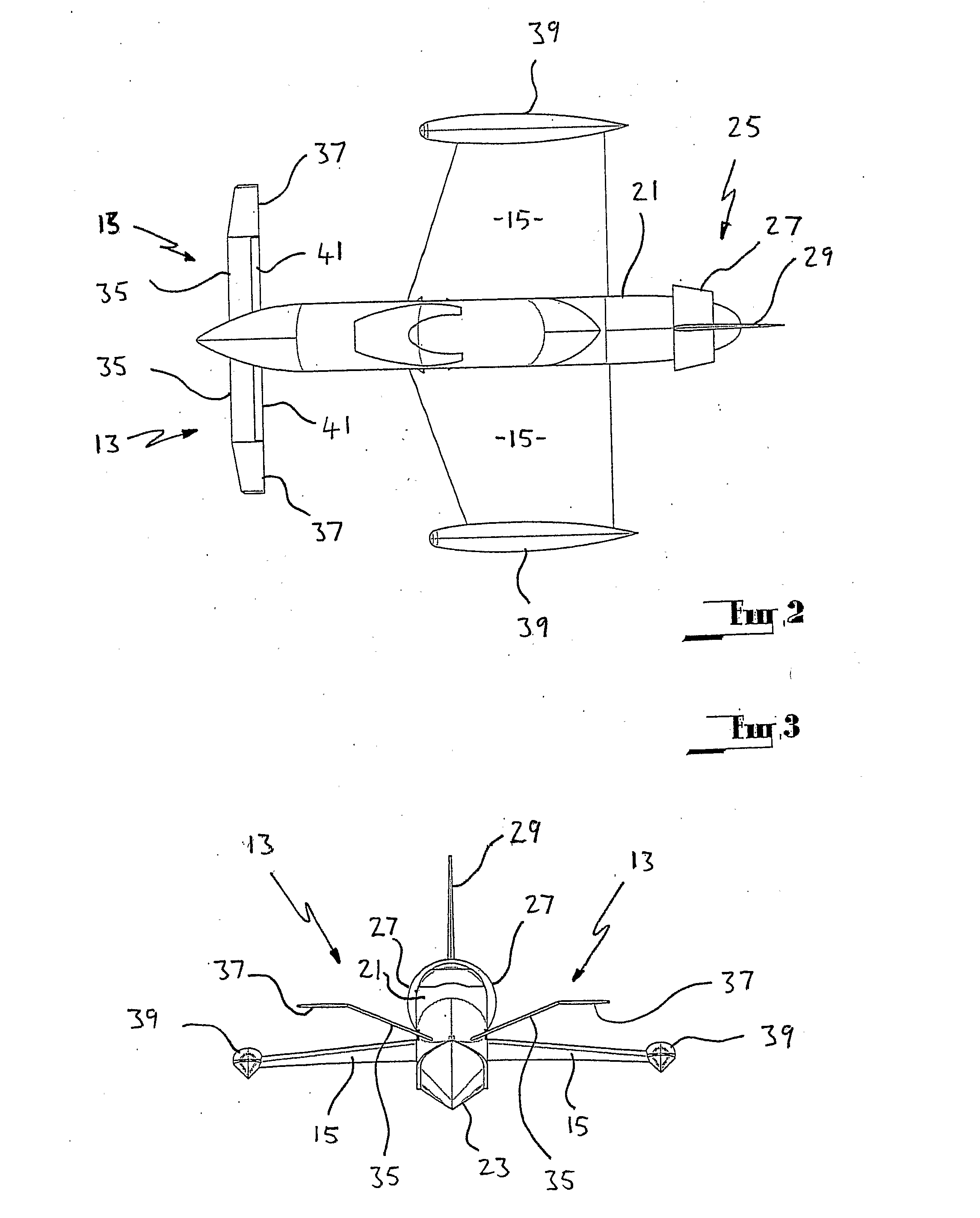Wing-In-Ground-Effect Craft
a technology of ground-effect craft and wings, which is applied in the field of aircraft, can solve the problems that the acceptance of wing-in-ground-effect technology is barely limited, and achieve the effect of easy ground-effect fligh
- Summary
- Abstract
- Description
- Claims
- Application Information
AI Technical Summary
Benefits of technology
Problems solved by technology
Method used
Image
Examples
first embodiment
[0057] Both embodiments are an amphibious wing-in-ground-effect craft 11. The wing-in-ground-effect craft 11 is characterised by canard configuration, having a loaded canard forewing 13 and a main wing 15 of forward delta configuration attached to fore 17 and mid 19 sections of a body 21 respectively. The body 21 is formed with an integral planing hull 23, and extends rearward to a tail section 25 which incorporates a ducted fan 27, and a vertical stabiliser 29. A rudder 31 is located in the exhaust of the ducted fan 27, for steering the craft 11. The ducted fan 27 has a three bladed impellor 33, which in the first embodiment is belt driven from a turbocharged 1800 cc Subaru EA82 liquid cooled internal combustion engine. With the rudder 31 mounted in the full flow of the duct 27, it is configured to serve as a stator, acting to reduce the induced spiral in the airflow exiting the duct 27. While these embodiments have a five bladed fan, it will be appreciated that the number of blade...
second embodiment
[0073] Wing-in-ground-effect craft are significantly inefficient at take-off due to “hump” drag and require almost 200% of cruise power to overcome this drag. the wing-in-ground-effect craft overcomes this requirement to a large degree by incorporating the second drive units either driving a conventional propeller through a retractable leg, a surface effect propeller or a Hamilton jet drive. Once clear of the sea surface the wet drive unit is shut down and in the case of the leg or SE propeller the leg is rotated or the SE prop feathered. The wet drive also provides a high degree of low speed manoeuvrability that would not be achievable with the ducted fan. The dual system also provides a degree of redundancy in the event of mechanical failure providing the ability to manoeuvre and get the vessel up on the plane using either drive.
[0074] Dimensions of the second embodiment are as follows:
Length Over AllMeter16Width Over AllMeter10Height Over AllMeter7WeightDrykg2,750FuelLitre500Cr...
PUM
 Login to View More
Login to View More Abstract
Description
Claims
Application Information
 Login to View More
Login to View More - R&D
- Intellectual Property
- Life Sciences
- Materials
- Tech Scout
- Unparalleled Data Quality
- Higher Quality Content
- 60% Fewer Hallucinations
Browse by: Latest US Patents, China's latest patents, Technical Efficacy Thesaurus, Application Domain, Technology Topic, Popular Technical Reports.
© 2025 PatSnap. All rights reserved.Legal|Privacy policy|Modern Slavery Act Transparency Statement|Sitemap|About US| Contact US: help@patsnap.com



